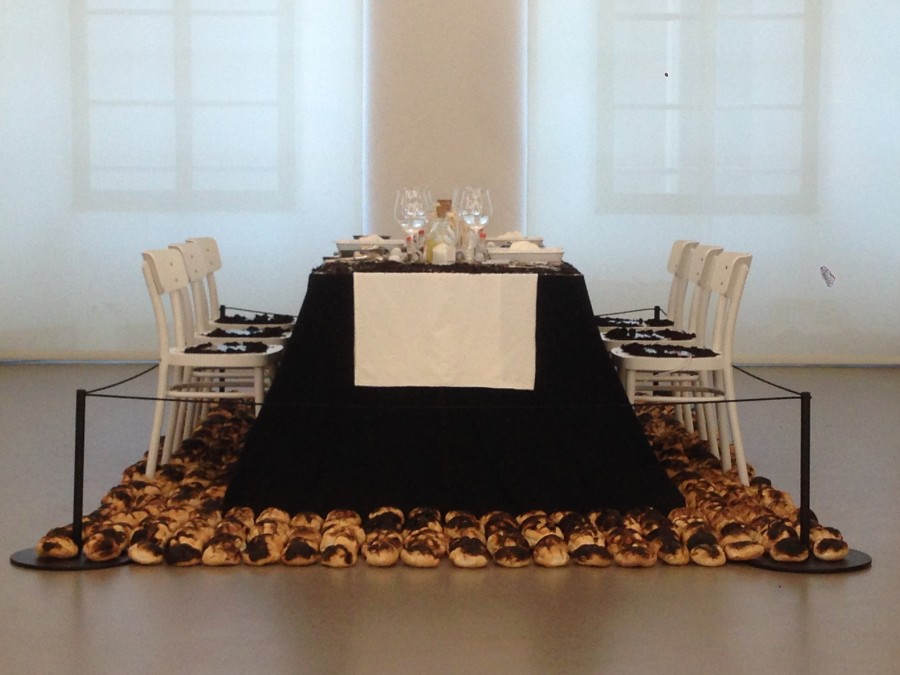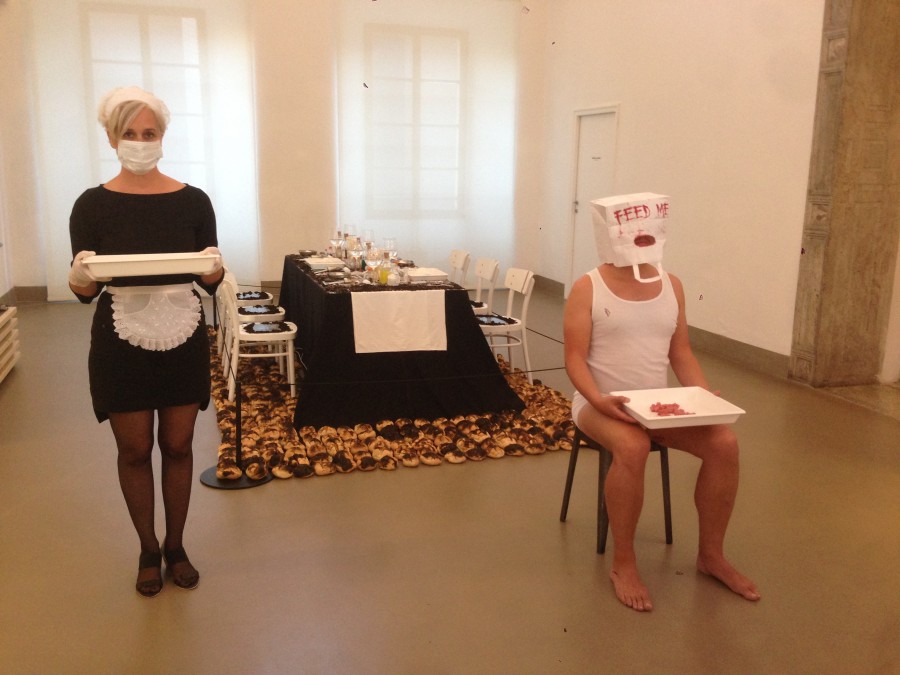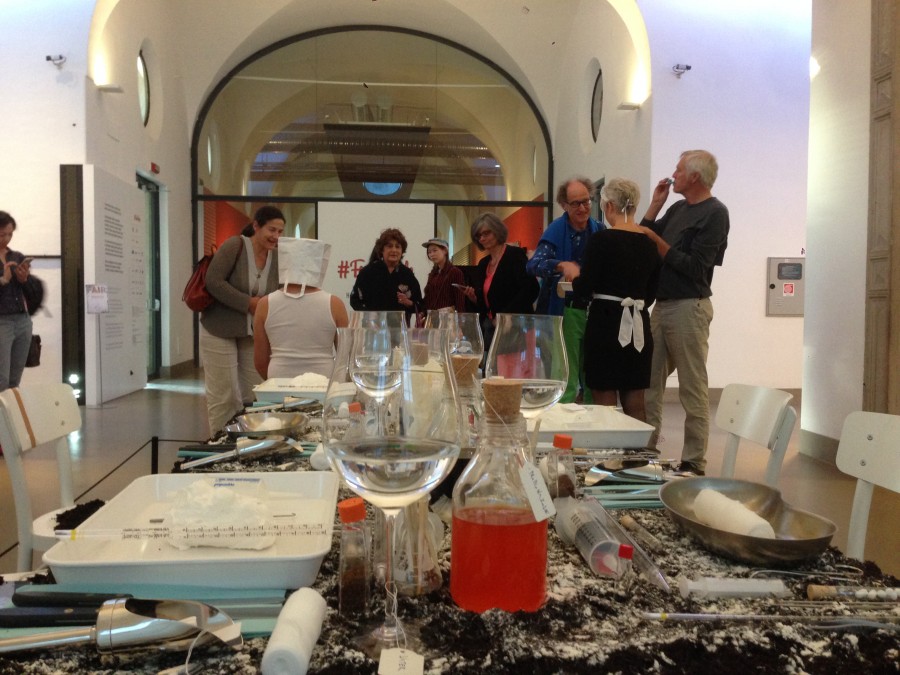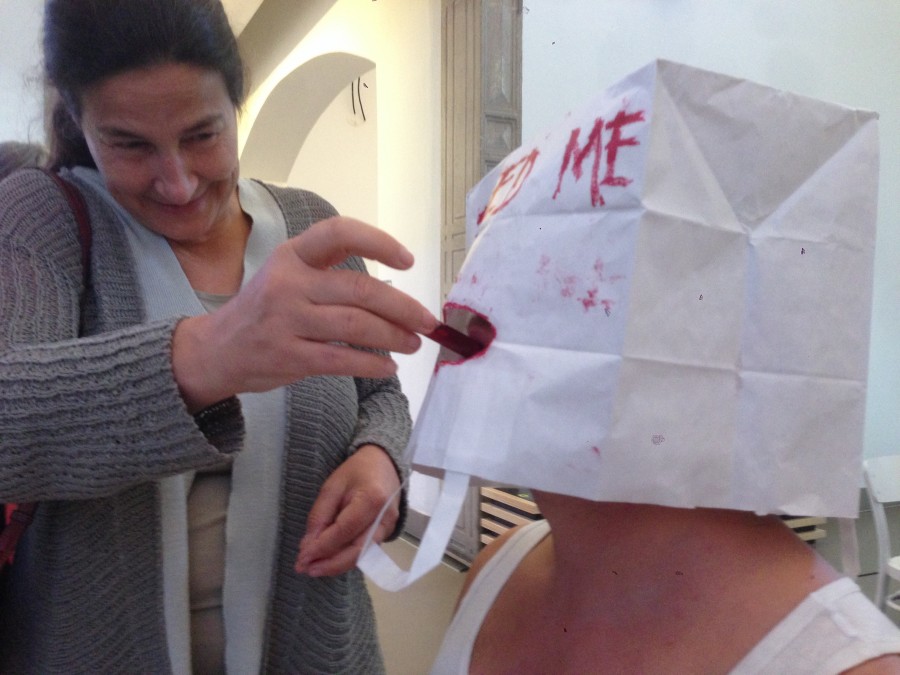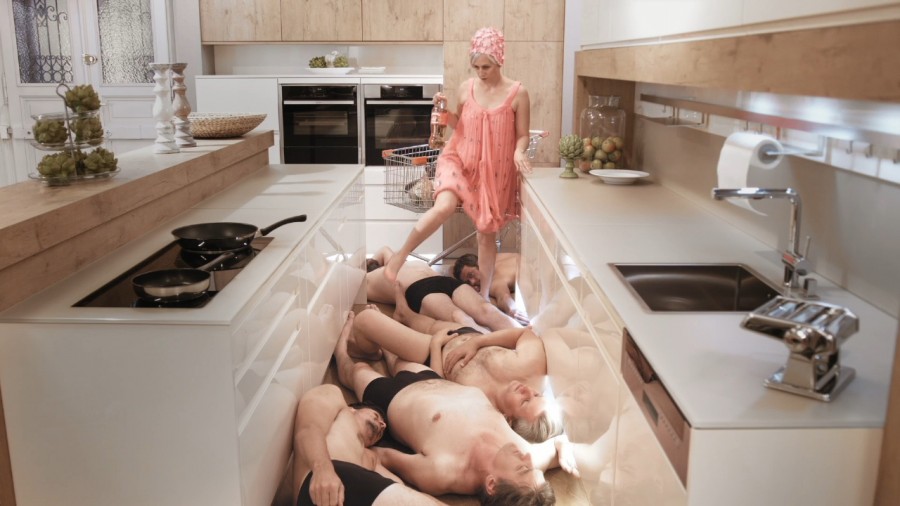market of externalities
Would you pay € 35 for a chicken or a loaf of bread? No? Well, that is quite unfair, as so much value has gone into its production! Let's analyse the price we are unwilling to pay: the poisons we spread in the environment for a simple meal, encouraged by the awesome power of the food industry. We pay for herbicides and pesticides, and machinery for harvesting and transport, but we don’t pay for their impacts on the health of the planet and its people … Sit down, relax, close your eyes and savour your chips, your noodles, your bread. Is it Glyphosat, Azoxystrobin, Atrazine, Chlorpyrifos or is it gas, gasoline or coal? What are you eating?
| Location: | Museo Nazionale della Scienza Leonardo da Vinci in Milano; Joint Research Centre Ispra/ IT |
| Type: | arts & science project / edible muldimedia installation |
| Date: | 2017 2018 at Wälderhaus Hamburg |
| Producers: | Adriaan Eckels, Francesco Mugnai, Angela Cardinali |
| Scientists: | Michela Secchi, Virgnia Maestri, Erwan Saouter |
| Thank you: | Frank Raes, Bianca Nussbaumer, Riedl Glas, Dan Küchen |
| Videos: | Sebastian Alarmovski |
Art Installation
What a wonderful dining table? Ninety by two hundred centimeters, candles, ten well designed dining chairs – how nice is that? What a perfect symbol for a civilised community?
But the table is covered with soil and some “strange” powders. It looks a bit devastated. The soil seems broken. The tableware is also a bit different – there are glasses from laboratories, surgeon instruments, petri dishes, Erlenmeyer flasks, containers for dangerous goods, etc instead of Baccarat, Christofle and Meissen. And these table objects are filled with strange powders, liquids and even with dirty water. Is it maybe Glyphosat, Azoxystrobin, Atrazine, Chlorpyrifos or Metolachlor? Or is it just polluted air or water? Our glasses and containers are simply filled with fungicides, herbicides, insecticides, additives, oil (!) and polluted elements. Our table is covered with externalities of food production.
But still we do have some food. Visitors see at least some (burned) bread and wine. These are the “results” of our externalities. A meal, we might say. Visitors do also have the chance to read information about our ecological externalities and about the “production needs” of our fantastic edible products: they take a look in our “menu” and see how much water, soil, rainforest, working hours or land grabbing is needed to produce one kilogram of our beef or wine. Is is irony? It is the economy stupid.
But still we do have plates. The ones, which represent food most in 2017 – Ipads. On these tablets people find short videos. The Videos show honey & bunny. They present our ideas of social sustainability, of inequality, of poverty, of fairness. The short films are interpretations of the cultural value: CONSUME.
Fairness is keeping decisions free from any form of discrimination. Does that mean that fairness is an ethical value? And do we need a debate about the environment too? Do we all (7 billion human beings) have an equal right for a fair environment, which keeps us healthy and wealthy? Should we say that sustainability is an issue of fairness?
Notably, the artistic approach to sustainability sets into motion the reexamination of living conditions in the areas of “Third World”, which supply raw foodstuffs to the globalised “world market” for the benefit of the “First World”, or of the effects of “climate change” to present and future biological and social systems. So, we are talking about fairness, isn´t it? A discussion on sustainability also means investigating the question of why “we” Europeans consider living sustainably such a challenge. The current way of living, including ethics, such as the belief in a steadily growing market economy, the necessity of constant consumption, or the desire for so-called supermarkets, seems to hinder us from reaching a fair way of living.
A note on collaboration | This transdisciplinary cooperation bases itself strongly on the idea of using artistic actions as a new method for education for sustainable development in order to academically accompany, and further develop, the transdisciplinary space.
Basically every meeting with scientists means learning from each other. So it is more than important to meet constantly, but we do interpret these interdisciplinary chats as creating – not as learning. We do need to WORK TOGETHER – not to get inspired by each other. The Joint Research Centre (JRC), organized and financed by the European Commission is – like every centre of science – in the same way an ivory tower as an artists atelier or a famous art museum. Ivory towers are comfortable prisons and these institutions do not have the will and power to change something. If we talk about fairness we do need to go out to streets to fight for. We do need to present, to perform, to convince. We need to change. But we need to help each other – to cooperate to find ideas of change. Learning is not enough!
Science Behind
Externalities are somehow the opposite of fairness. For economics, an externality is the cost that affects people who did not choose to incur that cost. If Europeans take water or land from Third World countries to produce food for their own market, they produce externalities for the inhabitants of these regions. If Europeans change the climate because of their tendency to overconsume, they change the living conditions in several regions. Europeans produce lots of externalities and food production is the worst player. The global report: “Agriculture at a Crossroads” by the United Nations says that we definitely need to change the world's food production to stop climate change AND to create a fairer society.
Neoclassical welfare economics asserts that, under plausible conditions, the existence of externalities will result in outcomes that are not socially optimal. Those who suffer from external costs do so involuntarily, whereas those who enjoy external benefits do so at no cost. The person who is affected by the negative externalities in the case of air pollution will see it as lowered utility: either subjective displeasure or potentially explicit costs, such as higher medical expenses. The externality may even be seen as a trespass on their lungs, violating their property rights. Thus, an external cost may pose an ethical or political problem.
Food production causes air pollution, soil erosion, land AND water grabbing, etc. Food production needs lots of (fossil) energy, it may destroy biodiversity and it could harm people’s health. Fertilizers, pesticides, fungicides, industrial farming provokes environmental costs. Who is taking care of these costs? The public? Martin & Sonja asked us to deal with externalities of BREAD and WINE. They forced us to find data about externalities of one kilogram bread and one liter of wine. We got these questions:
How much soil (sqm) is needed to produce one kg of bread and one l of wine?
How much water is needed to produce one kg of bread and one l of wine?
How much oil (energy) is needed to produce one kg of bread and one l of wine?
How much soil do we destroy with the production of bread and wine?
How much water do we contaminate within this production?
Which “chemicals” (fertilizers, fungicides, pesticides, cleaners, additives) are needed to produce one kg of bread and one l of wine? We need the exact of amount of the average production to use it directly at the installation.
How much CO2 pump we up to atmosphere during the production of bread and wine (from field to household)?
Where do we produce bread and wine – where is the land?
